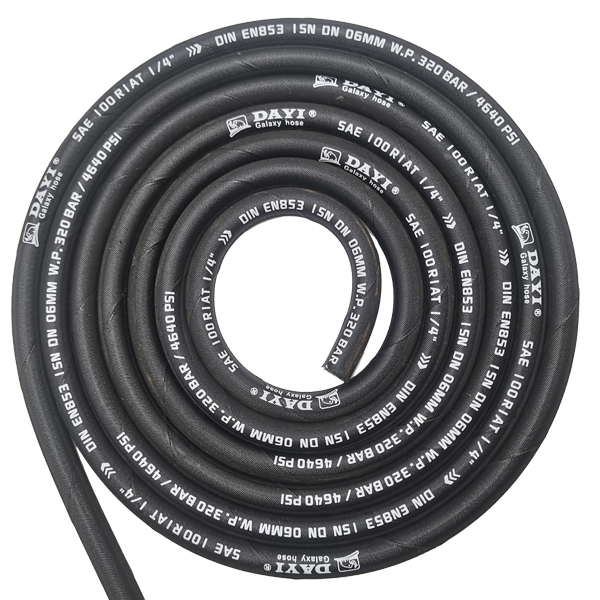335345435
Ago . 30, 2024 17:54 Back to list
Industrial Hydraulic Hose | Durable and Reliable Hydraulic Solutions
Understanding Industrial Hydraulic Hoses A Key Component in Fluid Power Systems
Industrial hydraulic hoses are vital components in a wide range of hydraulic systems used across various industries, including construction, manufacturing, and agriculture. These hoses are specifically designed to carry hydraulic fluid under pressure, enabling machinery and equipment to operate efficiently and effectively. Understanding their construction, types, applications, and maintenance is essential for anyone involved in the operation and maintenance of hydraulic systems.
Construction of Hydraulic Hoses
Industrial hydraulic hoses are engineered to withstand high pressure and extreme conditions. They typically consist of three main layers the inner tube, the reinforcement layer, and the outer cover. The inner tube is made of materials like rubber or thermoplastic, which must be compatible with the hydraulic fluid being used. The reinforcement layer, often composed of steel wire braids or spirals, provides added strength and durability. Finally, the outer cover protects the hose from environmental factors such as abrasion, heat, and UV exposure.
Types of Hydraulic Hoses
Hydraulic hoses come in various types, tailored to meet specific operational requirements
. Some of the most common types include1. Standard Hydraulic Hoses Suitable for general-purpose applications, these hoses are versatile and can handle a range of fluids and pressures. 2. High-Pressure Hydraulic Hoses Designed to operate in applications with high fluid pressures, these hoses are reinforced with multiple layers of wire. 3. Temperature-Resistant Hoses These hoses can withstand extreme temperatures, making them ideal for applications where heat build-up is a concern.
industrial hydraulic hose

4. Chemical-Resistant Hoses Fabricated using materials that resist corrosive fluids, these hoses are essential in industries handling aggressive chemicals.
Applications of Hydraulic Hoses
The applications of industrial hydraulic hoses are vast. They are used in hydraulic machinery such as excavators, forklifts, and hydraulic presses. In the agricultural sector, hydraulic hoses power equipment like tractors and harvesters, enhancing productivity and efficiency. Moreover, they play a crucial role in the manufacturing industry, where they are used in production lines for clamping, lifting, and moving materials.
Maintenance and Best Practices
Proper maintenance of hydraulic hoses is critical to ensure their longevity and performance. Regular inspections should be conducted to check for signs of wear, abrasion, or leaks. Hoses should be kept clear of sharp objects and excessive heat sources to prevent damage. Additionally, it is essential to ensure that hoses are installed correctly, without sharp bends or kinks, which can restrict fluid flow and increase the risk of failure.
Conclusion
Industrial hydraulic hoses are indispensable in the operation of hydraulic systems across many sectors. Their ability to transmit power through fluid under pressure makes them a cornerstone of modern machinery. Understanding the intricacies of hydraulic hose construction, types, and maintenance can help operators maximize efficiency and prolong the life of their hydraulic systems. By investing in high-quality hoses and adhering to best maintenance practices, businesses can ensure reliable performance and productivity in their hydraulic applications.
-
SAE 100 R17 Black Smooth Cover Hydraulic Hose
NewsMar.07,2025
-
SAE 100 R17 Black Smooth Cover Hydraulic Hose
NewsMar.07,2025
-
SAE 100 R17 Black Smooth Cover Hydraulic Hose
NewsMar.07,2025
-
SAE 100 R17 Black Smooth Cover Hydraulic Hose
NewsMar.07,2025
-
SAE 100 R17 Black Smooth Cover Hydraulic Hose
NewsMar.07,2025
-
steel wire braided hydraulic hose
NewsMar.07,2025



